The Oregon Department of Transportation has a response to the uptick of fatal and serious injury crashes on their roads: a new safety campaign that piggy-backs on the popularity of the Pokémon Go game and is timed to coincide with back-to-school season.
It’s called Safétymon Go and it comes with the tagline: “Safety is nothing to poké fun at!”
The Oregonian calls the new campaign, “groan-inducing.”
“Just in time for back-to-school,” reads a press statement about the new campaign delivered to media this morning, “members of the “Safétymon Go” family are focusing their messages on traveling safely: to and from school, in school zones, near college campuses and sports fields, and around other gathering spots and busy locations.”
There are 11 characters in all, each available in poster form on the ODOT website. They have silly names and associated safety attributes like: Safetoise, “Always look left-right-left before crossing streets”; Psafetyduck, “Always wear a helmet when you are riding your bike!”; and Safetykarp, “Be aware of your surroundings”.
Advertisement

The Safetychu character wears an ODOT safety hat and a vest. His message is all about school zones. Here’s how ODOT describes it:
Safetychu proudly wears an ODOT hard hat – as if he were in a work zone, but instead he’s in a school zone and he wants you, drivers, to SLOW DOWN in school zones! Students, pay attention when you are traveleing to and from school. Make eye contact with drivers when you are crossing the street. And when it starts getting dark, wear bright clothing like the safety vest Safetychu is wearing. Be safe and have fun!
Catch them all!
— Jonathan Maus, (503) 706-8804 – jonathan@bikeportland.org
BikePortland is supported by the community (that means you!). Please become a subscriber or make a donation today.


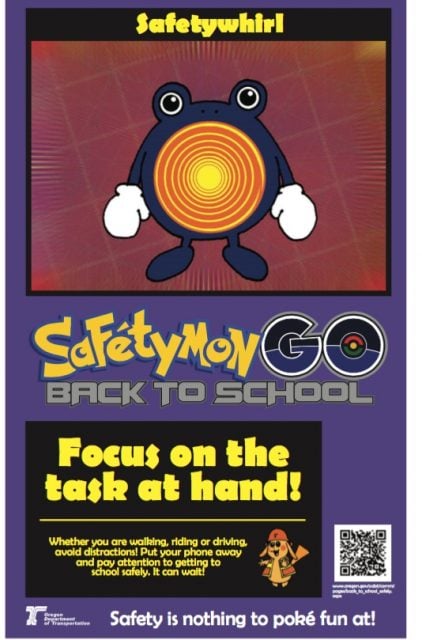
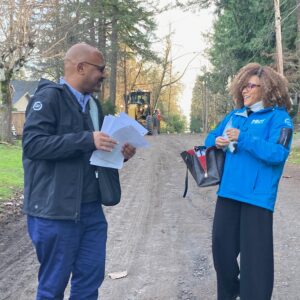
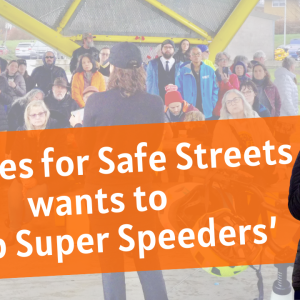
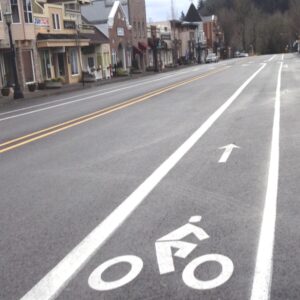
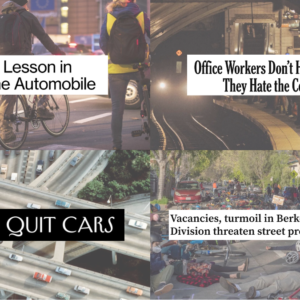
Thanks for reading.
BikePortland has served this community with independent community journalism since 2005. We rely on subscriptions from readers like you to survive. Your financial support is vital in keeping this valuable resource alive and well.
Please subscribe today to strengthen and expand our work.
Timely!
But…cease and desist letter from Nintendo’s legal team is inbound in 3, 2, 1…
It’s clearly a parody (of pokemon and of safety).
Safetychu should push a distractybarrel into the middle of some crosswalks and fill it with sand. Safétymon critters also like to hide behind jerseyboops and postydeals.
Is there a new character for “slow down” and stop fatal “hit-and-runs” ?
This is just so sad and worthless considering the severity of the issue.
not very creative with the names as all but one starts with “safeT” as if every Pokemon starts with “poke”…
Bulbasafety: Follow the rules of the road!
Safetoise: Always look left-right-left before crossing streets.
Safetychu: Slow down in school zones.
Safetybarel: Stop – and stay stopped – for people in crosswalks.
Psafetyduck: Always wear a helmet when you are riding your bike!
Safetykarp: Be aware of your surroundings. Pay attention!
Safeteevee: Pick a safe route to school. Find a street with less volume of traffic and lower speeds.
Safetepi: Buckle up for every trip.
Safetywhirl: Focus on the task at hand. Drivers, on driving. Walkers, on walking. Bikers, on biking.
Safetymander: See and be seen!
Safetyzee: Don’t drive drowsy – pull over as soon as it is safely possible.
Hey ODOT, it’s your fault our streets are unsafe to begin with! Instead of telling us to be safe, you should fix your own deadly designs!
yeah, that’ll show em.
Our streets are deadly not because of a lack of education, but because they have been designed to be deadly.
Maybe it will, on a bumper sticker.
Safetychu? Gesundheit!
Oh goody, another safety campaign directed at kids. “It’s your fault if you get run over!”
Is it time for the weekly “teaching kids traffic safety is teaching them to be victims” argument?
So is it wrong to teach your kid to look both ways before crossing?
Is there a corresponding campaign to convince drivers not to run kids over on their way to school, before something tragic happens? Oops, too late.
Pathetic. ODOT, go home. You’re drunk.
Can someone explain why all of ODOT’s campaigns that I’ve learned about here (check yourself before you wreck yourself, on down the line) all are built around puns and framed with a sing-song, chirpy voiceover? That decision seems to suggest that ODOT thinks of all of this as cute, as fun and games. But why treat its public like children? Why talk down to them? Why give it all a playful gloss when this really isn’t fun and games at all but miserably designed infrastructure ODOT willfully refuses to fix (Barbur, Hwy 101) and a widespread cavalier attitude about obeying the rules of the road (which is not ODOT’s problem per se though they could certainly use their authority to draw attention to it).
“…built around puns and framed with a sing-song, chirpy voiceover? …” watts
Kids, and a lot of adults, seem to like that sort of thing. Pokemon Go and other games seem a strong indication of this.
The sing-song routine may help warm kids and other people up to what definitely is a serious subject. Though I suppose there are people that may think a boring, sermon-like campaign would be more in keeping with such a serious subject, towards efforts made to get kid’s interest roused.
“Though I suppose there are people that may think a boring, sermon-like campaign would be more in keeping with such a serious subject”
I don’t see why these two are the only options for how to approach the subject of pedestrian safety. I can think of several ways authorities in other countries approach this, and they fall into neither of these categories.
My point—and I think it wasn’t so hard to figure out—is that by consistently choosing this cutesy format for their outreach materials they are trivializing a rather serious subject they’ve not even got a good handle on. If it at least produced results, then I could be won over, but no. ODOT spends our money riffing on pop culture themes while falling far short of its own unimpressive and hard-to-follow goals “195 fatality free days”. This seems like an agency caught in a death spiral.
Very young kids, at any rate. I’ve noted elsewhere and will say again here: the “Please, please, don’t be a litterbug, ’cause every litter bit hurts” campaign in my prehistoric grade-school years here in Portland is indelibly printed on my brain. To this day, the very idea of dropping litter on the street is anathema to me.
(Similarly, “All the animals in the zoo / are jumping up and down for you, asking you to be sure to plan / to visit the zoo as soon as you can…” I could go on, but I won’t. The point is, rhymes and tunes stick in the mind. Even – or especially – the annoying ones.)
Interesting point, Anne.
I guess what this brings out for me is the tension between the feel-good actions those jingles you remember advocating (not littering, visiting the zoo) and what we have here, which at least to me is in an entirely different moral category: not killing other people through carelessness or entitlement. Taking the effectiveness of clever jingles as given I still question whether this is the appropriate venue.
Thoughts?
Oh, I agree completely. I was just replying to wsbob’s point about jingles and rhymes being memorable by stressing how much MORE memorable they are when introduced very early in life.
I know we would guilt our own parents into not littering, not even a little bit, because of that anti-litter campaign. Hm…I wonder if safe-driving jingles, introduced to six-year-olds, would make their way to adult drivers the same way.
“…jingles and rhymes being memorable…” hawley
Jingles and rhymes are memorable for people of all ages. They’re used in songs, as well as in television commercials, print advertisements and safety campaigns. I guess the objection some people have to their use in ODOT’s safety campaign, is that they think ODOT should somehow be able to engineer the roads and streets under the dept’s authority, so well that any need for telling children to watch some for their own safety in using the street, would be unneccessary.
Maybe such an engineering achievement may someday be obtainable in our area…but it’s not here now, and that it isn’t, is not due to some oversight on ODOT’s part. People in Oregon using the roads, can benefit from the information and encouragement offered by ODOT’s creative safety campaign. ODOT staff…thank you for your efforts to help people be safe, by way of safety campaigns, as well as by road maintenance and engineering improvements that are possible as time and budget allow !
Gross. This is what happens when millennials start getting jobs in gov’t.
millennials could have come up with better names for the characters…
Like what? Those names are solid gold.
Victimblameon?
There you go. Your first step towards creating a campaign to ridicule ODOT’s approach toward safety, and make your point in a less preachy sort of way. Keep going.
Victimblameon used Where’s Your Helmet! It’s not very effective…
Notice all the victim-blaming mentality in this campaign: peds pay attention, wear bright clothing, cyclists wear helmets, etc.
However, the most damning of the bunch IMO is “find a street with less volume of traffic and lower speeds.” This phrase describes exactly zero ODOT facilities, so they are essentially telling you to stay off ODOT roads unless you’re driving.
And yet… all of these things are good advice.
Let me reiterate: ODOT is literally telling us to pick a “street with less volume of traffic and lower speeds” if you’re walking or biking to school. All ODOT facilities are high volume, high speeds, so ODOT is all but admitting their streets are dangerous.
I don’t think they would deny their streets are dangerous. Ask one of their engineers… they’ll freely admit it.
Adam has a point.
Wouldn’t ODOT’s stance here be akin to GM (in 1965) responding to Ralph Nader by saying if you want a safe car buy European.? Seems like a quintessential case of abdicating responsibility.
ODOT does not see their primary mission as safety. Their position on using alternative streets makes total sense, and is entirely consistent with how they see the world. It’s a cheap way to reduce the potential for a tragedy.
Is it so shocking that their worldview is different than ours? Is this not something that was already well established? This is why almost everyone here (including me!) wants ODOT out of Portland.
Wait a minute. ODOT spends quite a bit of our taxpayer dollars on safety education, on campaigns, on arm bands and the like. And they even reluctantly installed a left turn arrow at 26th & Powell so the chance of having one’s limbs ripped off would be slightly reduced. They may not in their hearts think safety is that important (and clearly they don’t given their initial reaction to Vision Zero) but why can’t we hold them to a higher standard? Expect more, lots more? After all it was Sweden’s DOT that kicked off Vision Zero in the first place.
Pragmatism can also be a way to shirk responsibility.
Hold on there… who said we shouldn’t hold them to a higher standard? I certainly want them to do a better job of making their facilities safe. We probably have to live with them for the foreseeable future, so I think reform is essential.
All I’m saying is that their message is entirely consistent with their mission. Do we need to get them to refocus their mission, to make it compatible with operating in an urban environment? Absolutely. It is essential.
I think someone is forgetting that ODOT is considering the left turn signal to be temporary. Does anyone else remember that ODOT wants to eliminate the bike lanes on 26th one year after putting in the signal? ODOT will in all probability eliminate the signal if the rail roads did not demand that they wanted their trucks unobstructed access to/from 26th for their truck traffic.
ODOT is not planning on removing the signal, even if the bikes are gone.
Sure, but a dismissive “well, ODOT will be ODOT” is not an excuse. Yes, I am well aware of ODOT’s position, but I still find an implicit suggestion not to walk or cycle on their roads be be disgusting. There is a vast difference between “the road is unsafe, so avoid it” and “the road is unsafe and needs to be fixed”. Applied to ODOT, I’d rather they be fixed from the ground up than simply chased out of town (though I’d certainly find the latter to be acceptable).
You missed my point. I was just saying it isn’t much of a revelation that they don’t see safety as job #1, and that their advice to avoid their facilities is entirely consistent with their priorities.
I am 100% on board with getting ODOT out of Portland, and if that’s not possible, with getting them to restructure their facilities to make them compatible with the urban environment they’re operating in. I was writing letters and lobbying PBOT about this in the early 2000s. I’m solid on this issue.
No, I got your point. My point was that we should still be disgusted at their idea of “safety” meaning stay off their roads – despite the fact that we all expect this viewpoint from them. ODOT deserves to be called out on their BS, even if it’s fully anticipated.
If you tell ODOT “Hey, look, you say kids should walk and ride their bikes on a parallel street, not along Columbia Blvd, get your act in order!” They’re going to reply “It’s not us, it’s Safeteevee, but it’s good advice. I sure wouldn’t let my kids walk or ride along that street… would you?”
So sure, be disgusted, call them out, but it won’t do any good. The way to change them is to apply pressure at the top, or apply “sideways” pressure via organizations like PBOT.
A few years back I asked our five-lettered-friend from Beaverton,* who doesn’t post here so much anymore, to list for us the ways he felt pedestrians could reduce their chances of being killed by 90%, and I added that staying home was not an acceptable answer. ODOT’s suggestion to not use their roads if you hope to get home alive while not in a car seems to me on par with telling people to stay home.
I guess what I hear Adam saying—and I agree with it—is that if you’re going to say stay off our roads if you hope to stay alive there needs to be a parenthetical clause indicating at how ODOT is remedying this forthwith. Without that clause I guess I don’t see any value in their pitch, just a tacit admission that they’ve not only historically been disinterested in any of their public not already in a car but continue to hold this view.
* http://bikeportland.org/2014/06/20/pbot-ad-campaign-drivers-slow-107630#comment-5088006
I would argue it’s not particularly tacit.
“A few years back I asked our five-lettered-friend from Beaverton,* who doesn’t post here so much anymore, to list for us the ways he felt pedestrians could reduce their chances of being killed …” watts
That would be me, w-s-b-o-b…and a big part of the reason I don’t post here as much as I once did…besides the fact that all my comments go through bikeportlands moderation before being posted (which by the way, I don’t much mind, at all. Thanks for your work, Jonathan)…is because of the type of comments, that too many to this comment section are: a lot of spoiled, whining crabby complaints about serious efforts public agencies make to encourage and help people to prepare themselves for safe use of the street.
And it seems these type comments rarely if ever include any effort to offer a serious, well thought out non-malicious alternative to the safety campaigns the public agencies put together. It’s as if the posting of a bikeportland story on public agencies’ safety campaigns is an announcement of open season unrestrained hoots and jeers.
…watts and any of you others that don’t like this campaign…let’s see your attempts to put together and present an alternative that will offer, good, solid information to kids and older people, that will catch their interest rather than putting them into a deep sleep.
“And it seems these type comments rarely if ever include any effort to offer a serious, well thought out non-malicious alternative to the safety campaigns the public agencies put together.”
That isn’t even close to true. The conversation I linked to above featured a list of suggestions I felt was quite to the point, and it was you who never followed up with any substance, just some huffing and puffing (to quote a phrase).
watts at http://bikeportland.org/2016/08/31/oregon-dot-launches-safetymon-go-campaign-190733#comment-6697454
People complaining in this discussion section, about ODOT’s safety campaign, are not offering, or working to offer, as I’ve written just above:
“…an alternative that will offer, good, solid information to kids and older people, that will catch their interest rather than putting them into a deep sleep.”
People that don’t like the campaign should come up with one they think is better, that isn’t simply a cynical, sarcastic excuse to ridicule, whine and complain about ODOT’s efforts to help people do some things that will help them be safer in their use of the road.
There must be some artists, cartoonists and writers with a positive attitude, reading bikeportland, that, with a positive, upbeat outlook, could put together a safety campaign of their own creation, for people using the road on foot, bike, etc. Put one together. If it’s good, odds are this site’s owner, Maus, will at least give it a look, if not write a story, or feature a good safety campaign that is an alternative to those of the public agencies.
ODOT’s campaign is good, what I’ve seen of it and read about it in this story and in some of the more positive minded comments to this discussion section. The campaign is upbeat, informative, colorful. Truly refreshing, especially alongside the mean and vitriolic, negative remarks of some people commenting here.
I’m waiting for ODOT to start taking safety seriously.
“Notice all the victim-blaming…” adam h
What victims? Safety campaigns’ objective is to help prepare people, before they become victims…to avoid becoming victims of traffic collisions. Giving people information useful to their avoiding being involved in a collision is what safety campaigns attempt to do.
Personally, I’m not a game fan. I know next to nothing about pokemon go, except that it’s apparently been fabulously popular, especially of late. People lots older than grade school kids, seem to love the game. The game is like a household word. That makes it kind of super smart to ride on that popularity to get people’s attention directed towards doing their part to be safe in using the road.
The problem is that the only people who need their attention gotten are driving cars in lanes twice their width with an extra car width on each side in case they run off the road — this recovery area may or may not contain bikes or pedestrians. Bob the Safety Boulder should be painted bright green, wearing a foam hat, and sitting in any of about 10 places in this picture: https://goo.gl/maps/ufzxLXpLMRv or really anywhere a crosswalk is longer than 20ft.
Instead, what ODOT plans to do for this intersection is to cut down about 8 trees and turn this only stretch of tolerable sidewalk along Barbur into a curb-tight one. They might as well print pamphlets that say “stay safe, stay inside”.
Thanks Adam for making me feel like such a lousy parent because of all the victim blaming I am trying to instill on my kids. Teaching them to look both ways before crossing a street and wearing those pesky helmets. I guess all I am doing is raising future victims. What a waste of time.
You need to teach them that their safety is someone else’s responsibility.
According to Adam, it is.
I have no problem with a parent teaching their child how to be safe around cars. However, there is a marked difference between a parent telling their child to be safe in the street and the government giving the same message. The difference being the government can actually do something about it but is choosing not to. Government deciding instead to place the responsibility on the road user rather than the road designer (i.e. themselves) is what I have a problem with.
Although I will continue to wish for the day that we no longer have to educate our children on how to not get hit by cars.
Are you suggesting it is within our government’s power to eliminate all conflicts between different classes of street users, to the extent that it is no longer good advice to look both ways before stepping into the street? And that they can do so so quickly that there is no need to educate the public how to maximize their safety on the street?
No, I was implying that I hope for a day when we don’t have to tell our children how dangerous the streets are because they no longer are.
And until that day comes, we should cease doing safety education?
No, just direct all the safety education at drivers and actually make it count by forcing them to take extensive education courses as a prerequisite to obtaining a license. However, we absolutely should stop TODAY the safety campaigns directing people walking and cycling to wear helmets and bright colors. The onus of responsibility should be directed at those most capable of causing harm, not the potential victims of said harm.
Do you think your proposal to stop advising people to wear helmets and be visible TODAY will increase or reduce injuries and deaths on the street? If your position is that these steps are ineffective, then that should be your argument (and explain why you think those steps don’t help). If you think these steps are morally wrong, and we should be willing to accept a higher level of traffic casualties in order to stand up for our principles (make drivers be responsible for everyone’s safety, no one else has a role), that is a different argument.
I’m hearing you make the moral argument. Is that correct?
Also, do your arguments flow to other types of traffic safety education (i.e. look before entering the street, don’t immerse yourself in your device, etc.), or are you only concerned with “be visible” and helmets?
For every person a “be visible” campaigned has saved, how many people were scared away from walking/cycling because the “safety” campaign told them their chosen mode of transport was dangerous? There have been studies that show no increase in safety when wearing hi-vis, so the effectiveness of these campaigns is dubious at best.
http://road.cc/content/news/99660-high-vis-clothing-doesnt-make-cars-pass-you-more-safely-says-new-study
Oh, and that whole “distracted pedestrian” rhetoric is a myth.
http://www.streetsblog.org/2016/03/31/inside-the-latest-distracted-pedestrians-con/
I don’t know about those two specific claims that your article rebutted, but I have experienced the issue while riding — pedestrians involved with their devices wander around a bit, and don’t always hear the polite bell I use to alert them to my approach. Perhaps you’ve experienced that as well. Maybe pedestrian inattention doesn’t change interactions with autos, but I’d be surprised if that were the case.
As a cyclist, it is my responsibility to recognize and avoid hitting the “distracted pedestrians”. It is not their responsibility to not get hit my me.
Yes, yes, of course. But if I’m not doing my duty, better for the pedestrian to be aware of what’s going on. It doesn’t do them any favors to be right if they still get knocked down.
Safety is about multiple layers of protection, not just relying on one procedure or party to do the right thing, especially when failure modes are common, well known, and understood.
Honestly, I simply don’t find it worth my time to argue about ped/bike interactions. Given that both parties are near equally as vulnerable, things generally work out simply using the existing social constructs. Yes, there may be some pain points (those damn scorchers passing me too closely, or those bloody peds buried in their phones on the MUP) but very rarely do this result in an incident where someone gets hurt.
The biggest threat to all of our safety are cars, plain and simple. Drivers have been given free reign to kill people walking and cycling with impunity and that is where we should be focusing out attention upon. In-fighting only distracts us from the true issues and is exactly what the car lobbies want. We all need to unify against car abuse.
I agree cars are the biggest threat to our safety. And since we cannot rely on all drivers to never make mistakes, I think one critical component of increasing safety is to help educate everyone on ways they can protect themselves if and when a driver inevitably screws up.
The world I live in is prone to failure, and so I want everyone involved to be helping ensure that when failure happens, it causes as little pain and suffering as possible. And if that means reminding people that being invisible puts them at greater risk, then so be it. I’m willing to cede some of the moral high ground in order to save lives.
My question to you is, do you actually think there are people that need to be told to look both ways before crossing the street? Humans have evolved to easily recognize and be averse to danger, and crossing a busy street looks and is dangerous. I just don’t buy the argument that the government needs to tell us all what we already know: that our streets are dangerous and we need to exercise caution around them. Being vulnerable will inherently do that for you.
However, there are plenty of drivers who are uneducated in the rules of the road and don’t realize their actions are creating unnecessary danger to other road users. Therefore, given limited government resources, I beleive all education campaigns should be directly solely at drivers.
So for you it simply comes down to what is the most effective way to promote safety?
“…However, there is a marked difference between a parent telling their child to be safe in the street and the government giving the same message. The difference being the government can actually do something about it but is choosing not to. Government deciding instead to place the responsibility on the road user rather than the road designer (i.e. themselves) is what I have a problem with. …” adam
Consistency is a great idea. It’s a good idea for parents, as well as government, to be telling kids to be safe in the street. Road engineers can come up with excellent ideas for enhancing the safety of vulnerable road users using roads and streets where motor vehicles also are in use. Ideas though, are only that…ideas…until it comes to the question of whether it’s possible within budget and time constraints, to actually realize the idea in the form of asphalt, concrete, steel and other metals, labor, fuel and so on.
Come up with the money, and ODOT and other transportation departments in the state, will help you realize your ultimate bike pedestrian friendly dream network of streets and roads. Nobody in Oregon so far, is prepared to give the dept the amount of money it would take to accomplish such a dream.
By the way…if you were head of the department, what amount of money do you think you would need to realize the kind of safe street infrastructure you have in mind, and that would be able to meet the travel needs of people in Oregon, sufficient to keep the state’s economy thriving?
Safety education is a good thing. My problem is less the message (creative execution aside) but rather the messenger. ODOT delivering road safety messages lacks credibility and makes about as much sense as Philip Morris educating me on how to safely use their tobacco products.
I personally welcome a bit of fun safety message that can be PART of the six E’s of Safe Routes to School. Yes we have to make major changes in the infrastructure and ODOT has a LONG way to go to get better at supporting and improving our communities for active transportation.
However, Education and Encouragement are also pieces of the solution so why not get creative and have some fun with what’s new and interesting to kids?!
Instead of sending out the same old tired messages I’m gladly sending a few of these flyers out for schools to hang up for kids to ‘find’ in their schools as well as a couple around the district for staff to remind them about the need to stop for people at crosswalks. We’ll also be using them in social media outreach. Thanks ODOT; now let’s work on getting more funds for physical Safe Route improvements too.
#SafetymonGO; yay.
Imitation is the sincerest form of flattery. I bet ODOT had a Safetypalooza 10 years ago. snicker.
If Odot can fund the crash trucks on hwy 26 to clean up the aftermath of auto-on-auto carnage it seems fair that they should also fund saftymon mobiles that come set up jersey barriers , speed bumps , etc on their dangerous roads during school hours to prevent carnage
What a waste of time and money. Bulletins do almost nothing to change behavior. This is akin to a factory putting a sign on the wall for Safety First; useless and misguided.